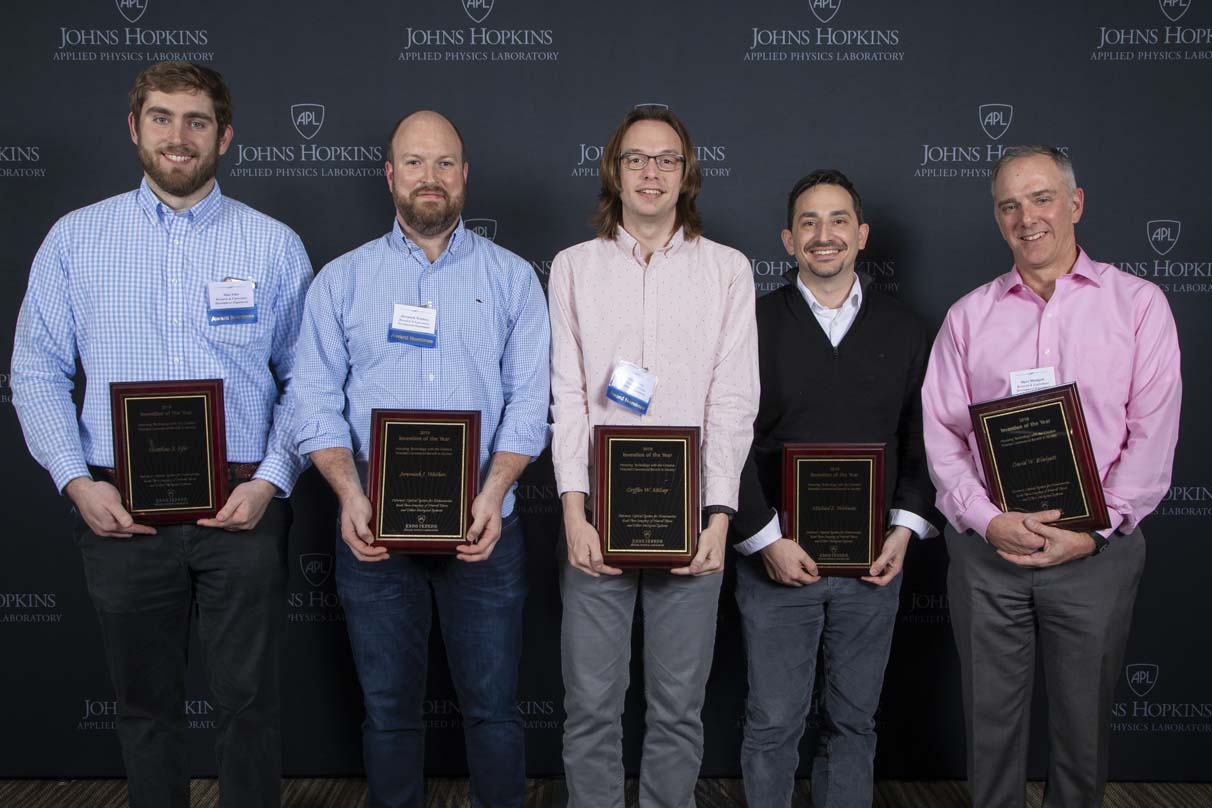Press Release
Johns Hopkins APL Celebrates Innovation and Staff Achievements, Honoring Top Inventions, Discoveries and Technical Accomplishments
A coherent, optical system that allows for noninvasive, real-time imaging of neural tissue and other biological systems was announced as the Johns Hopkins Applied Physics Laboratory’s Invention of the Year at the annual APL Achievement Awards ceremony on April 30 at APL’s campus in Laurel, Maryland.
With a theme of “Enabling Innovation by Enabling You,” APL honored the best 2018 publications, research and development programs, innovation initiatives, mission and enterprise accomplishments, and more.
In all, 549 APL staff members were nominated in 118 entries for 23 awards, and a record 123 staff members were recognized for their successes. Those award-winners represented a small portion of the critical contributions APL made for the nation in 2018, and highlighted a few outstanding examples of the Lab’s focus on collaboration, world-class expertise and game-changing impact.
“Thanks to all of our innovative staff members,” Jerry Krill, APL’s assistant director for science and technology, said at the ceremony. “They are dedicated to making critical contributions and creating defining innovations to ensure our nation’s preeminence in the 21st century.”
2018 APL Achievement Award Winners
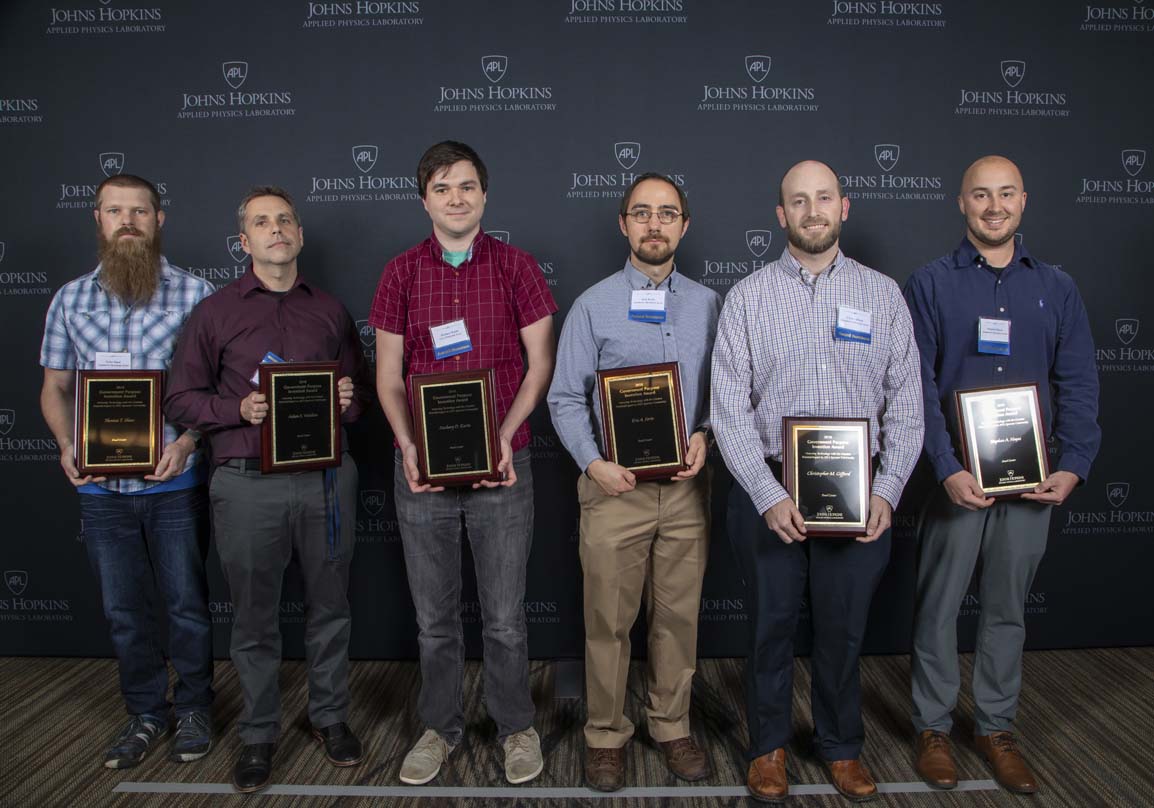
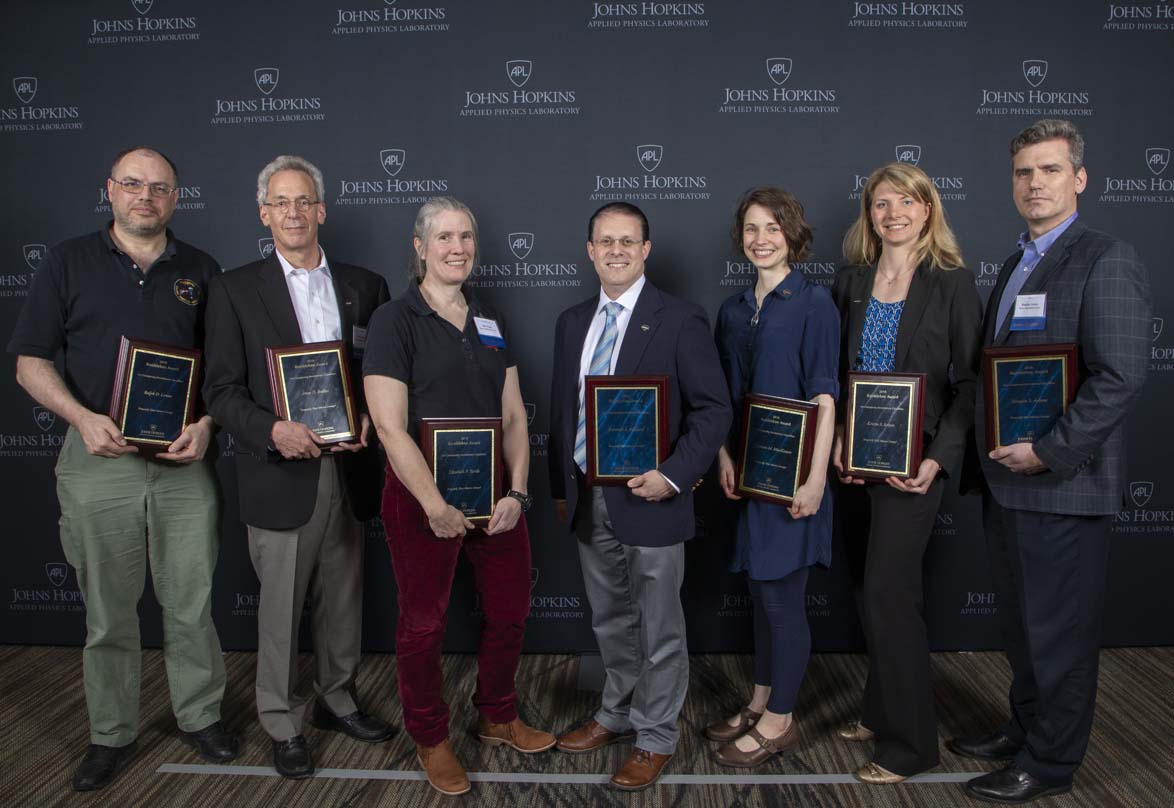
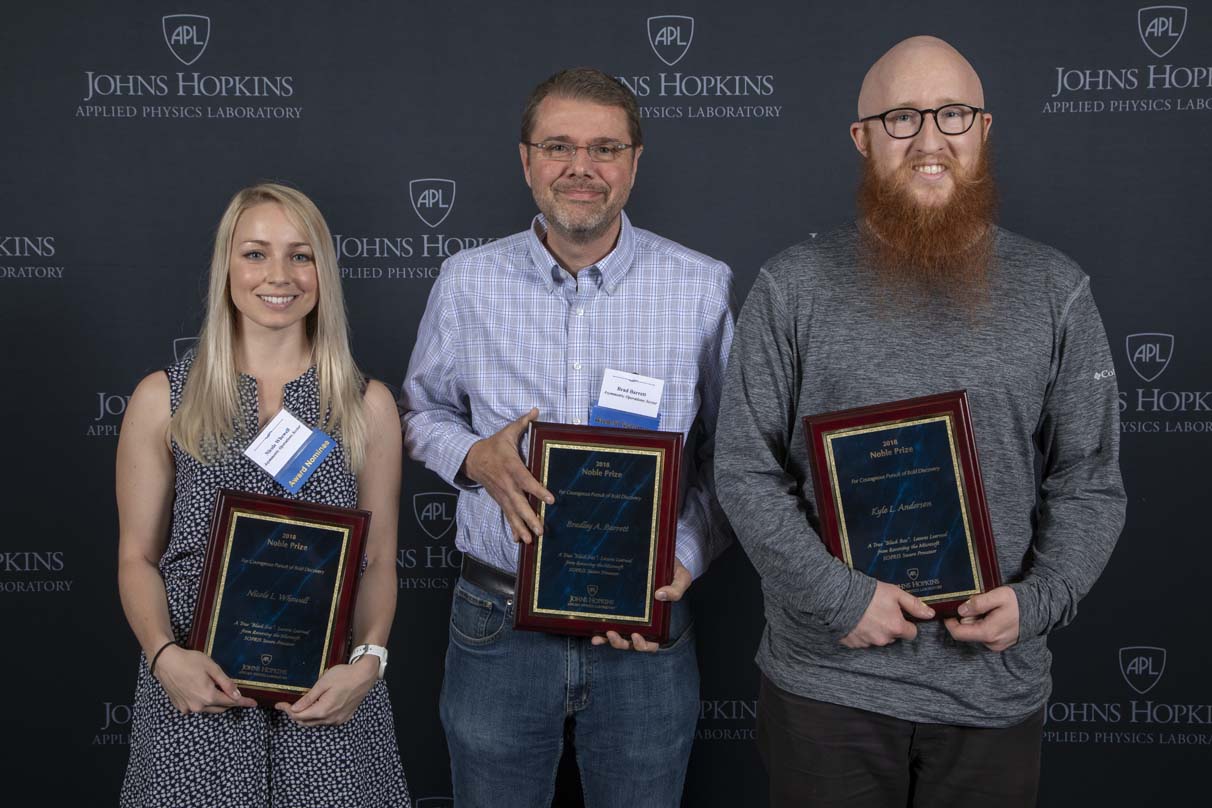
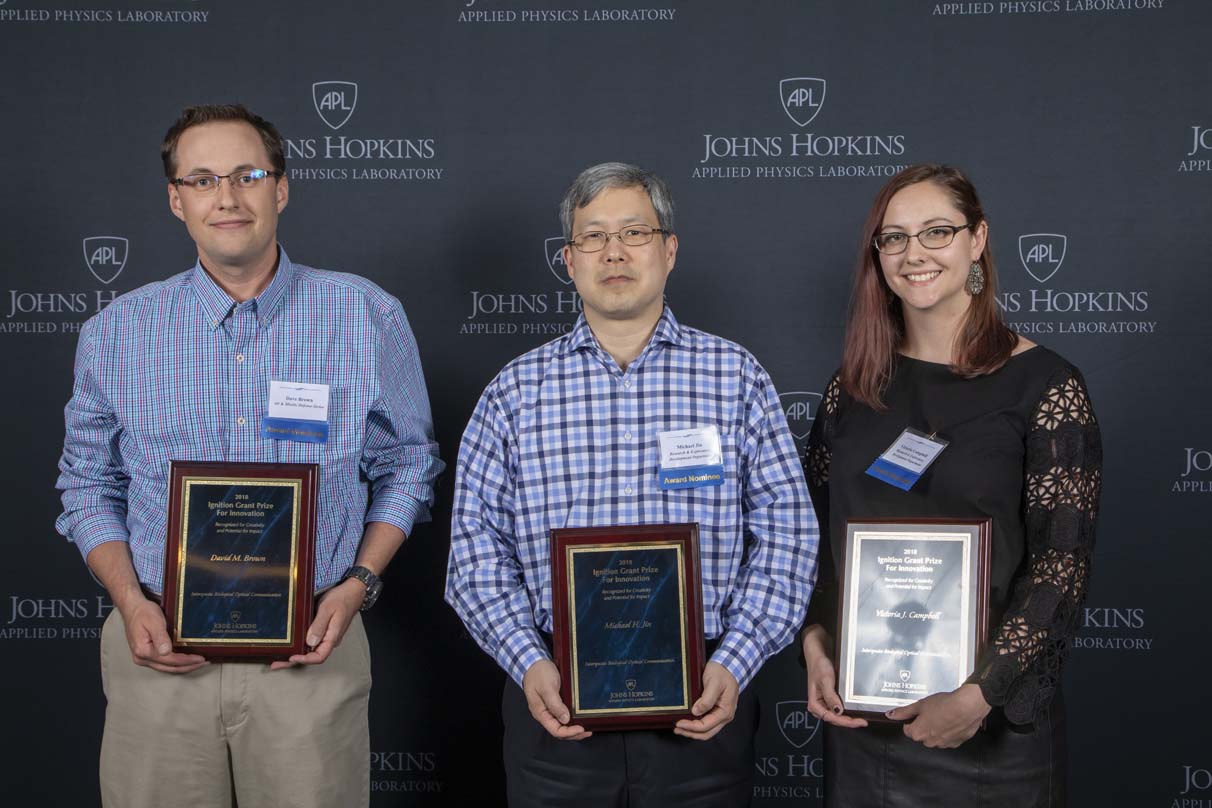
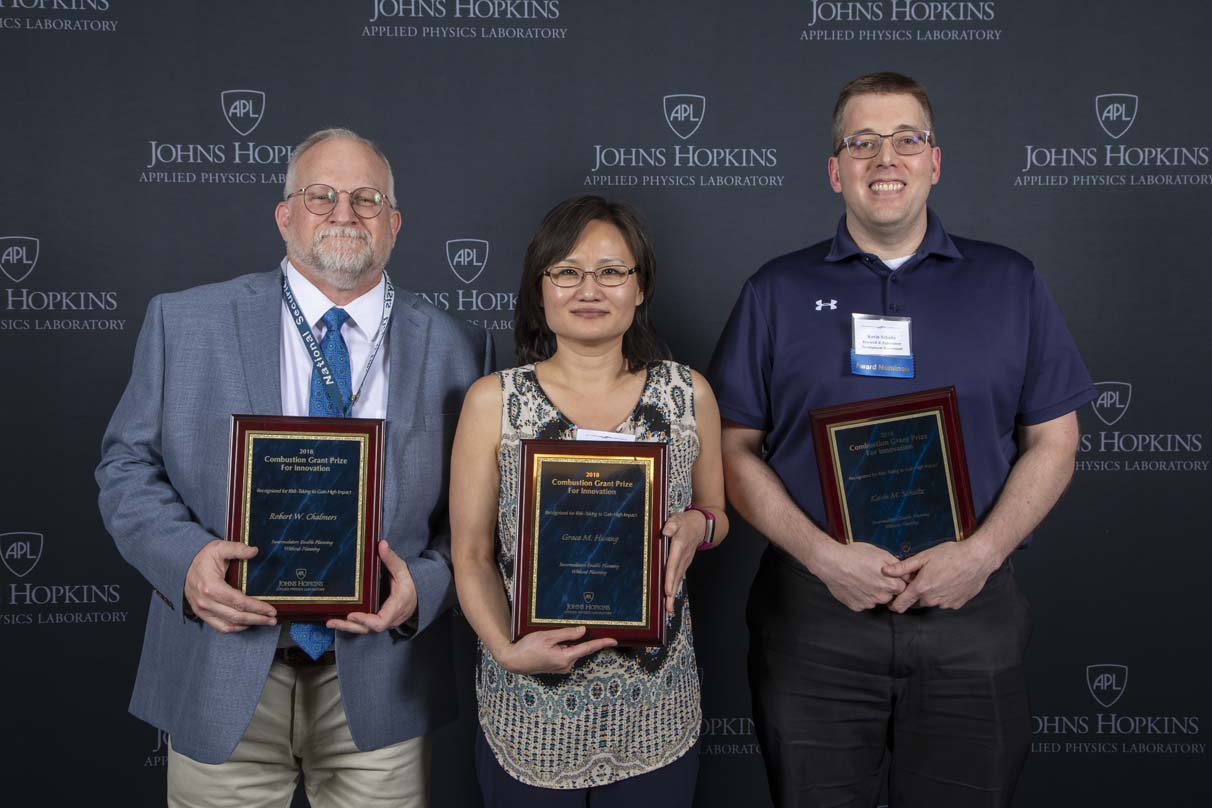
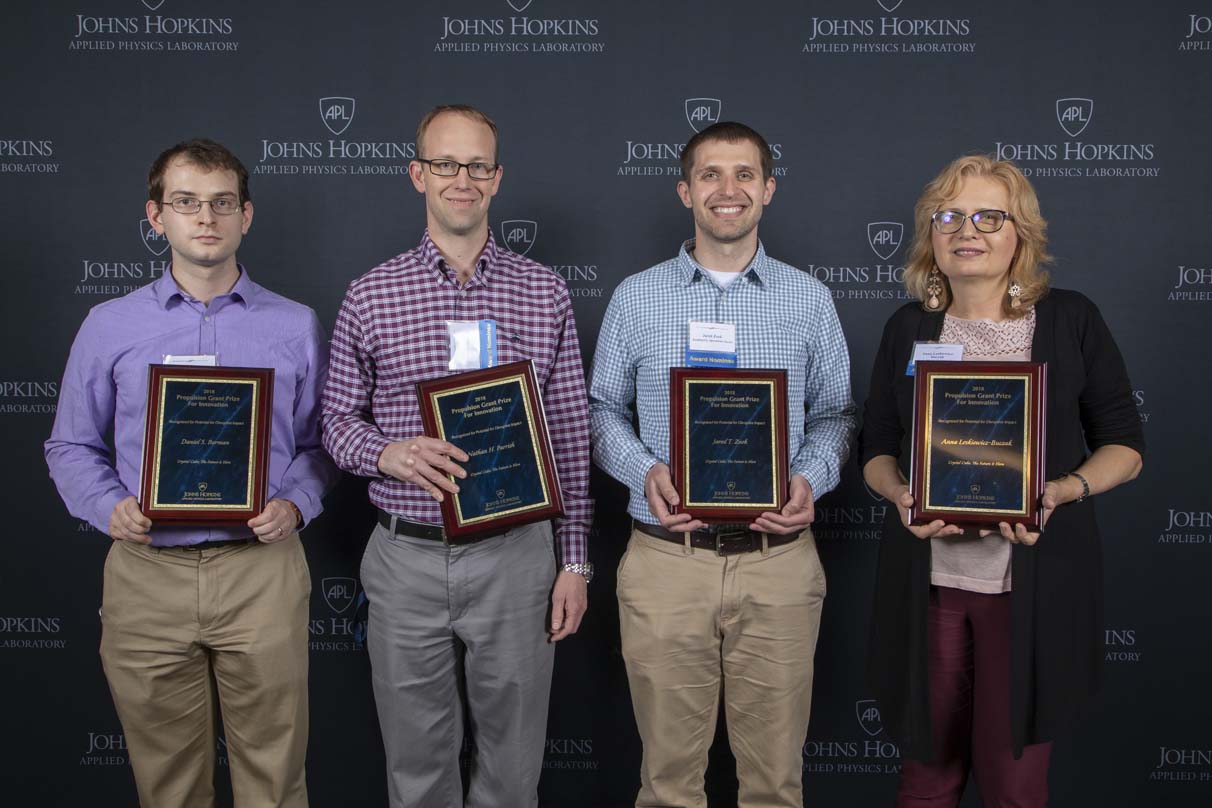
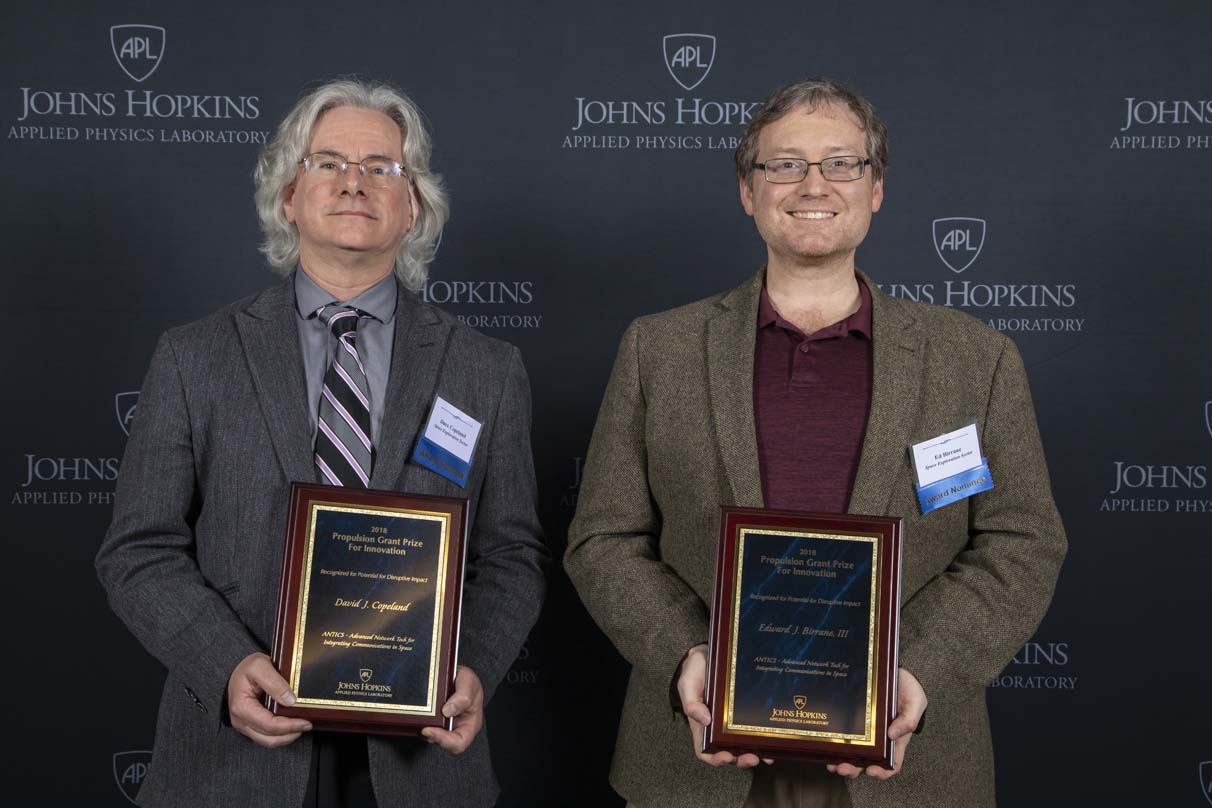
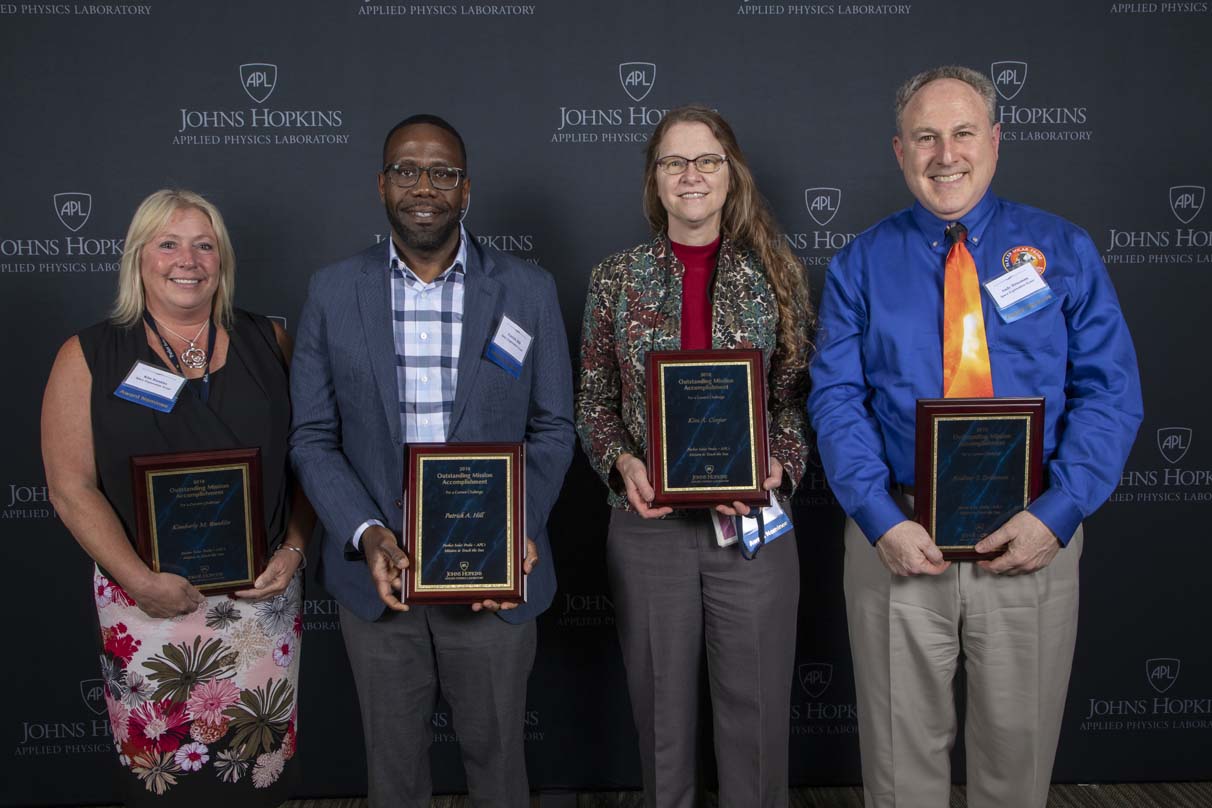
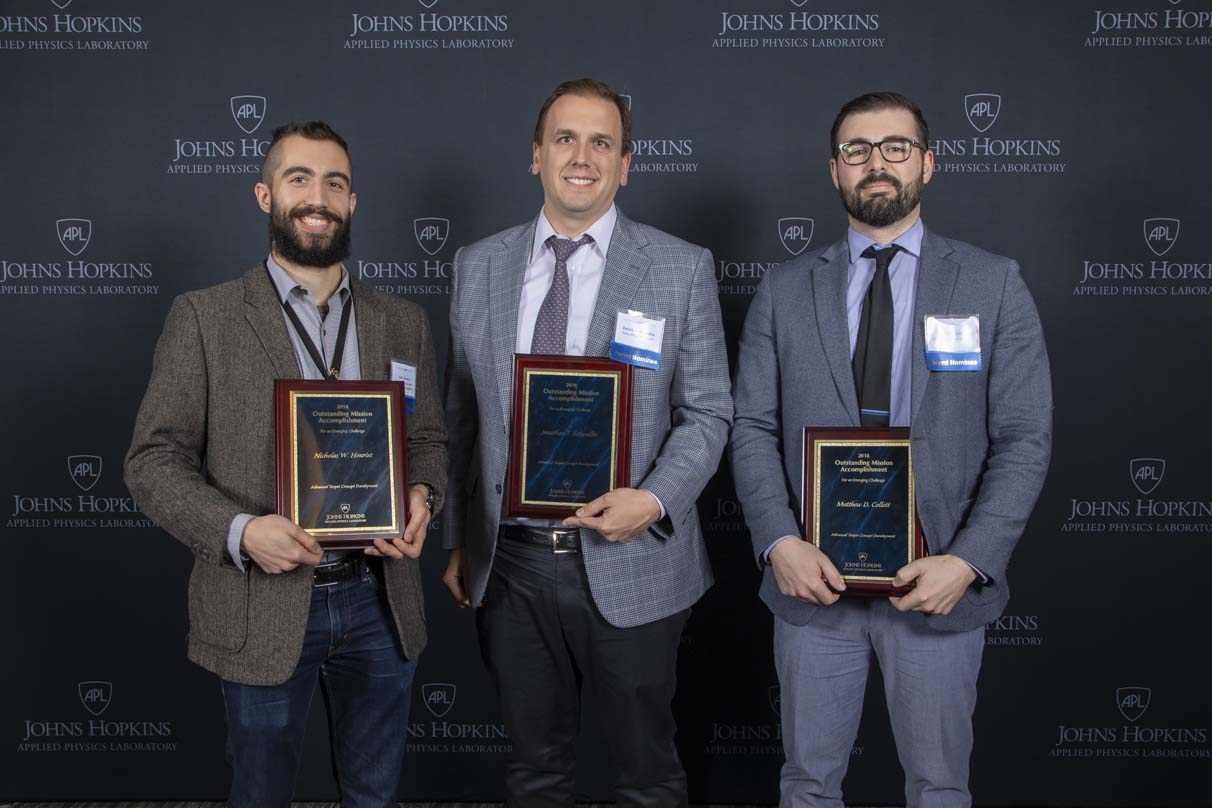
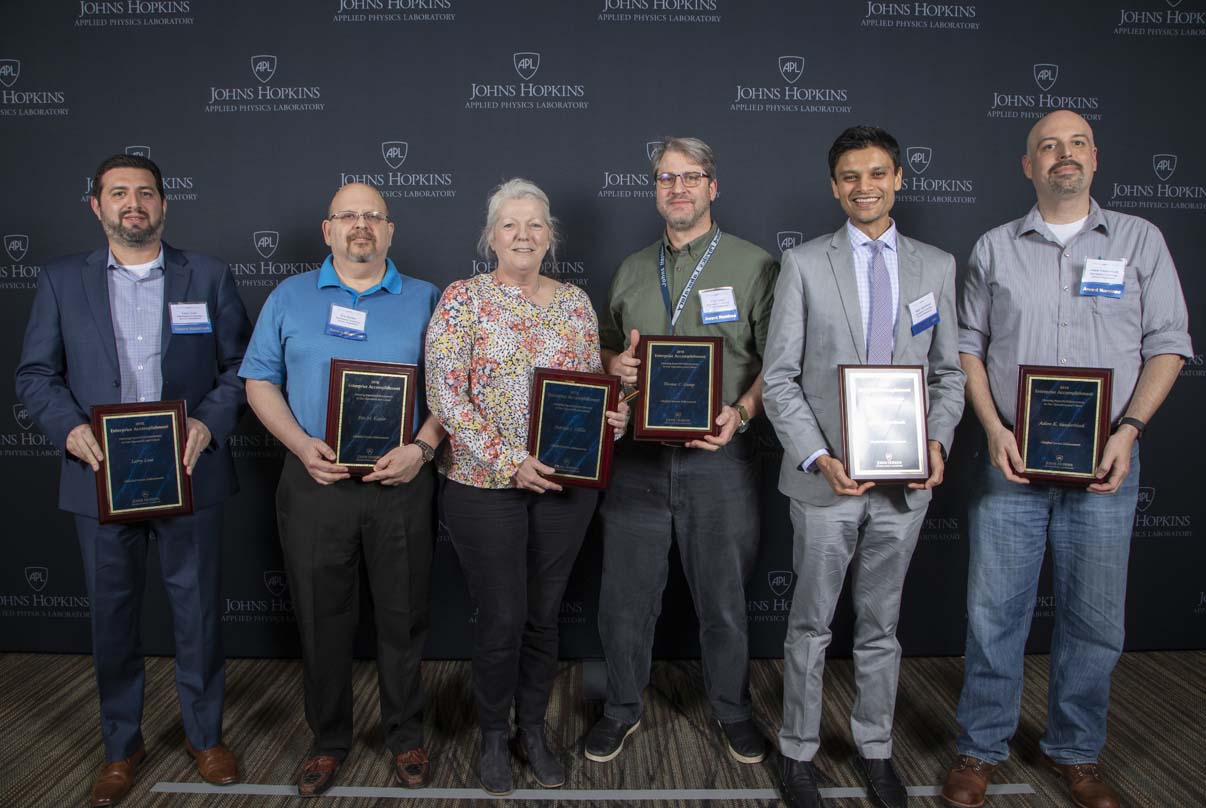
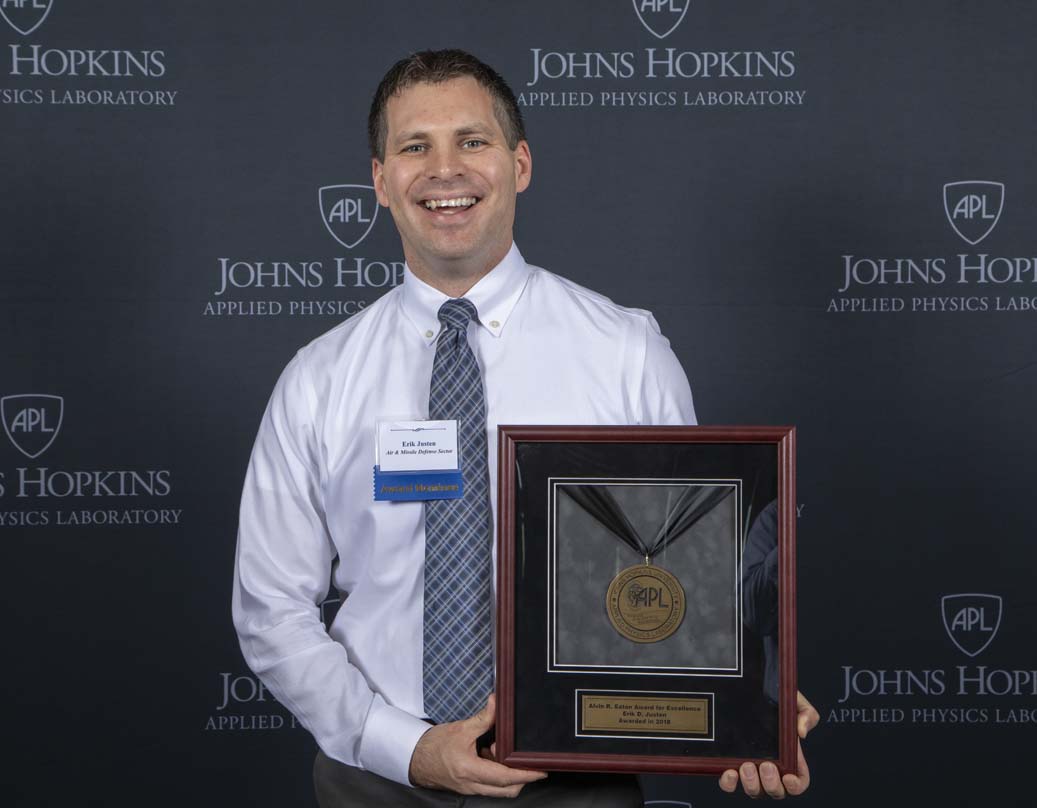
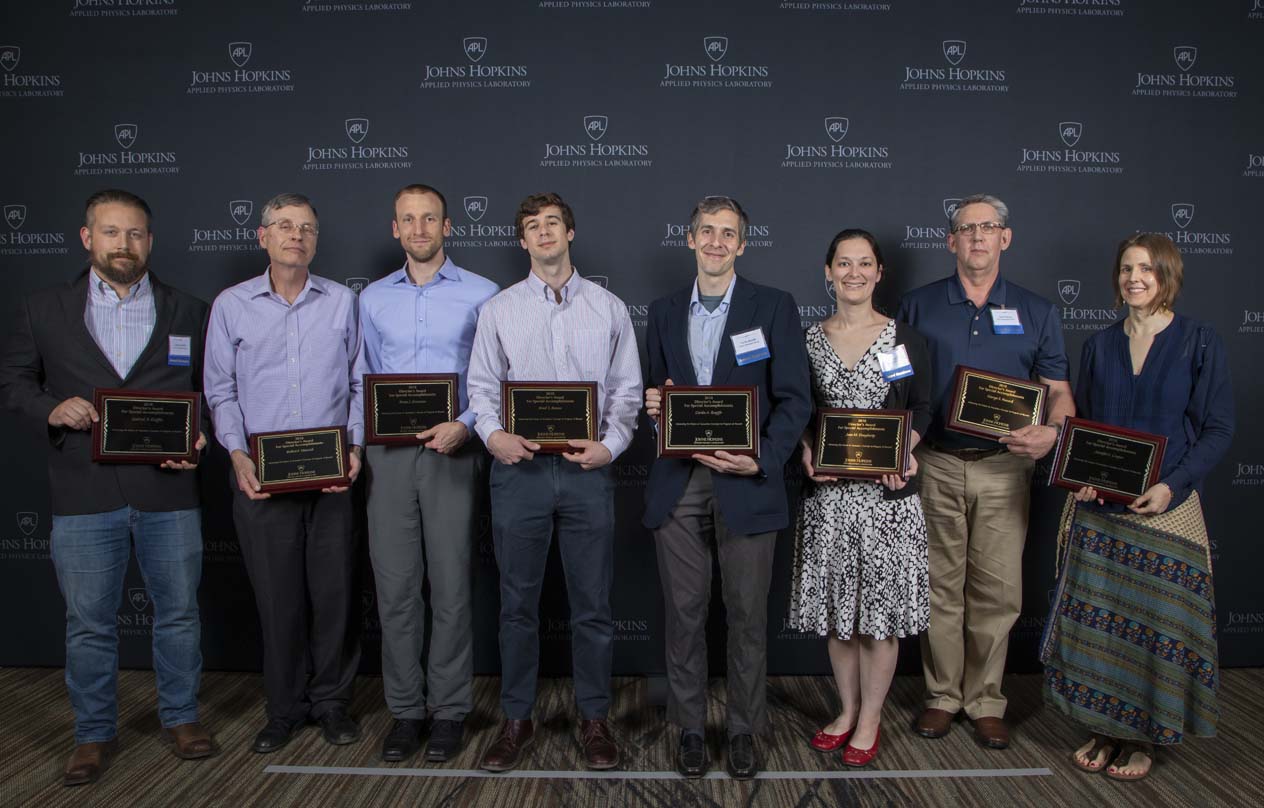
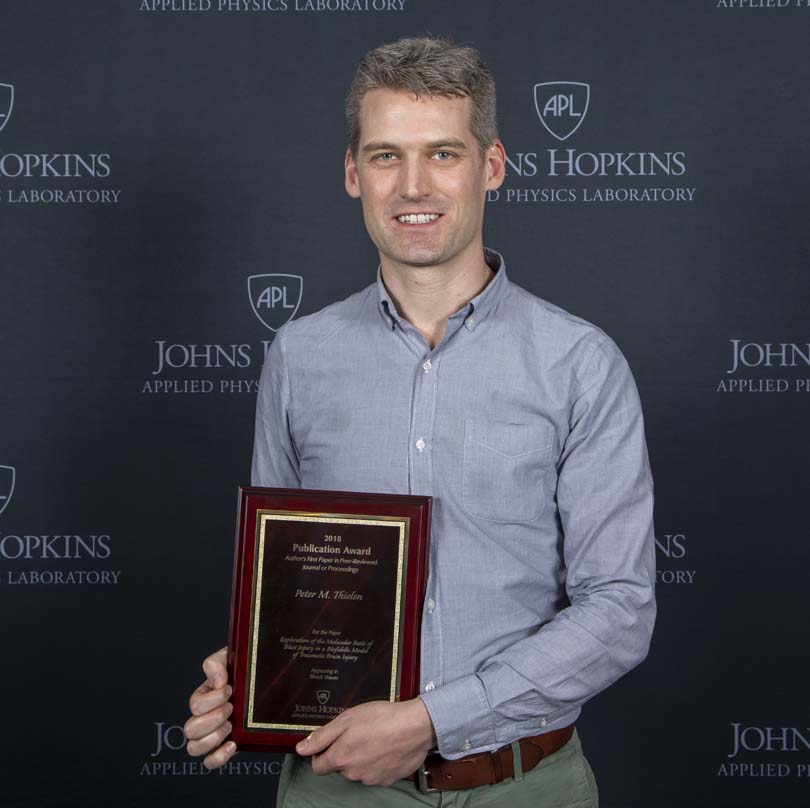
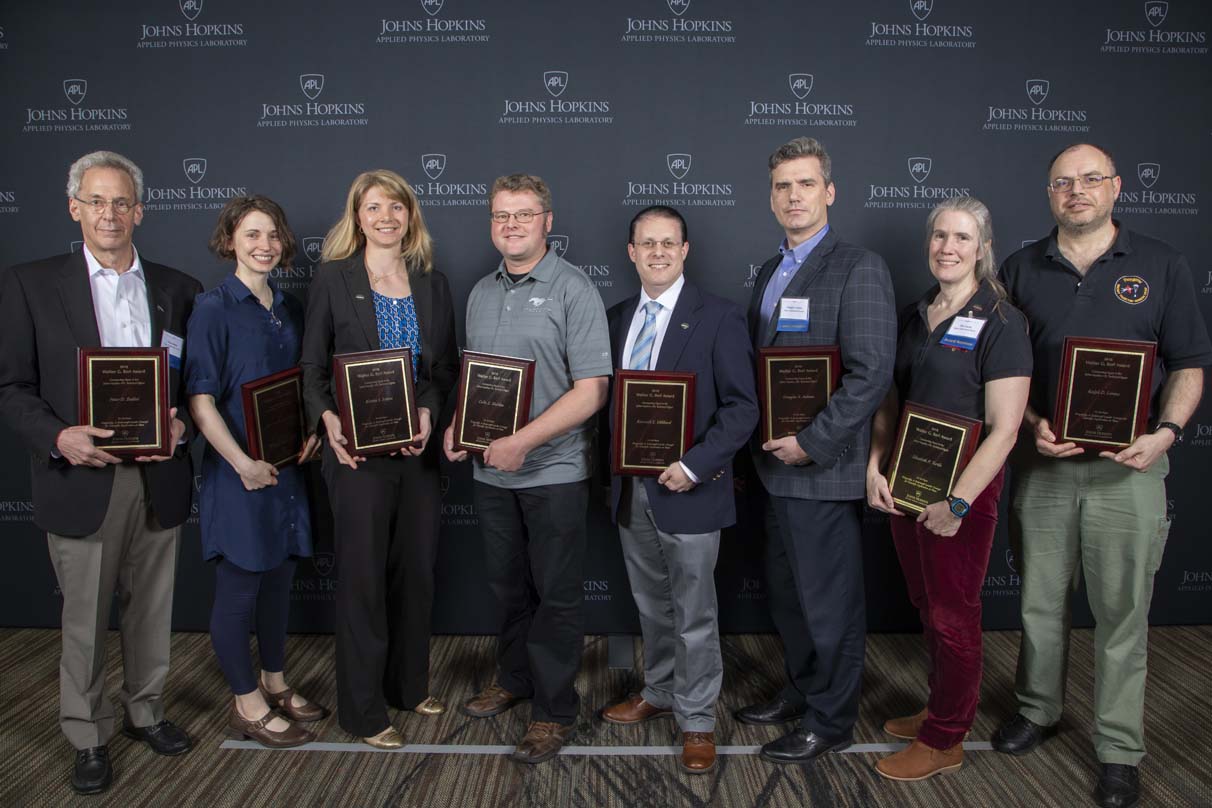
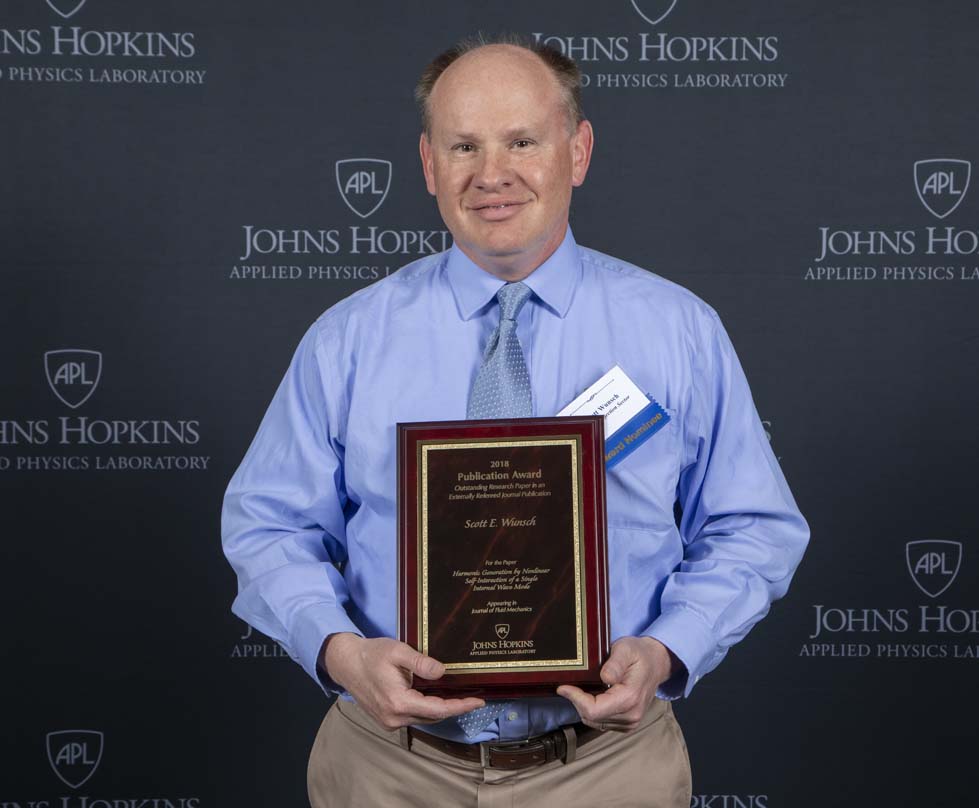
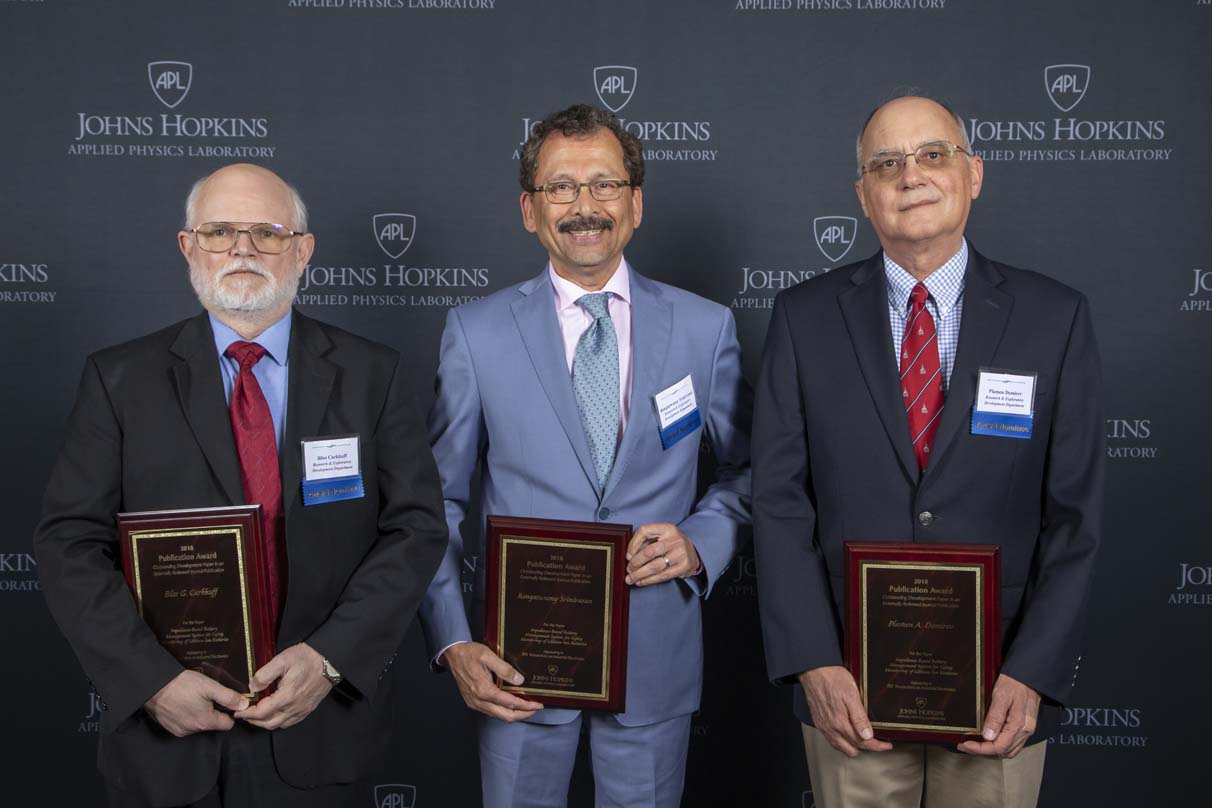
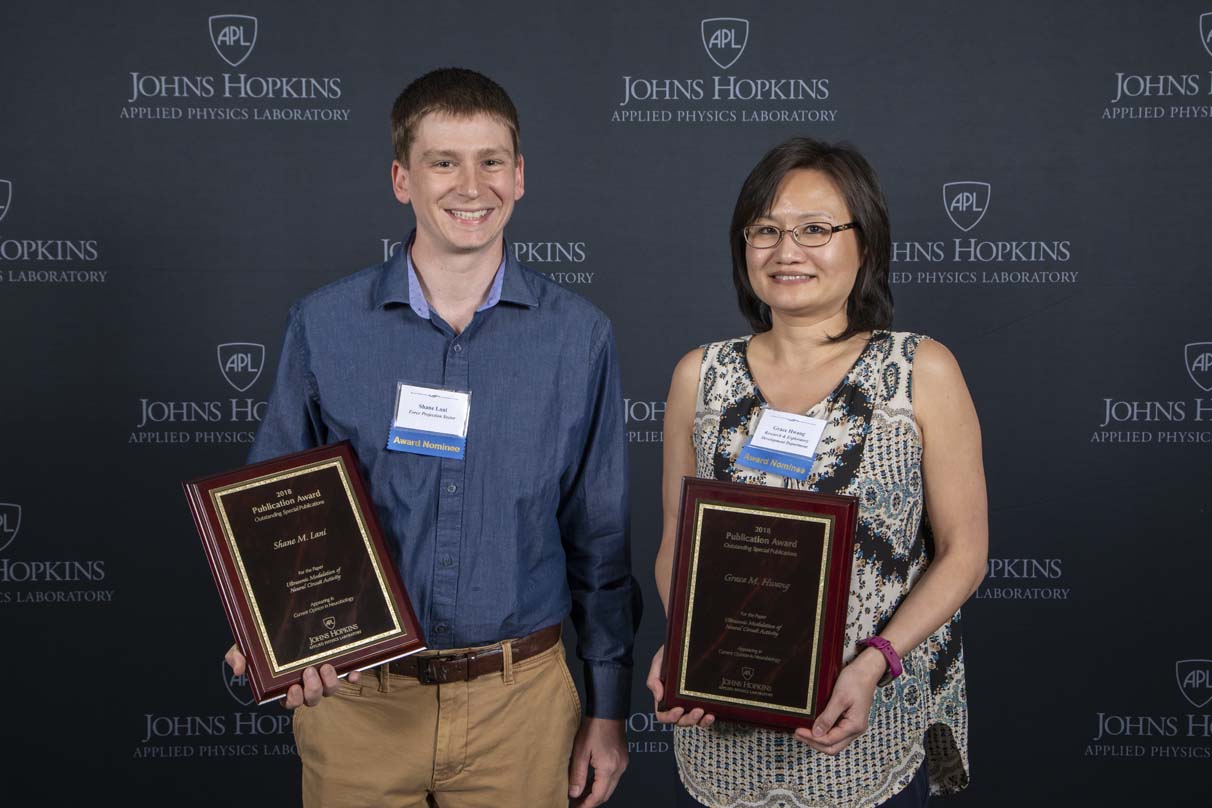
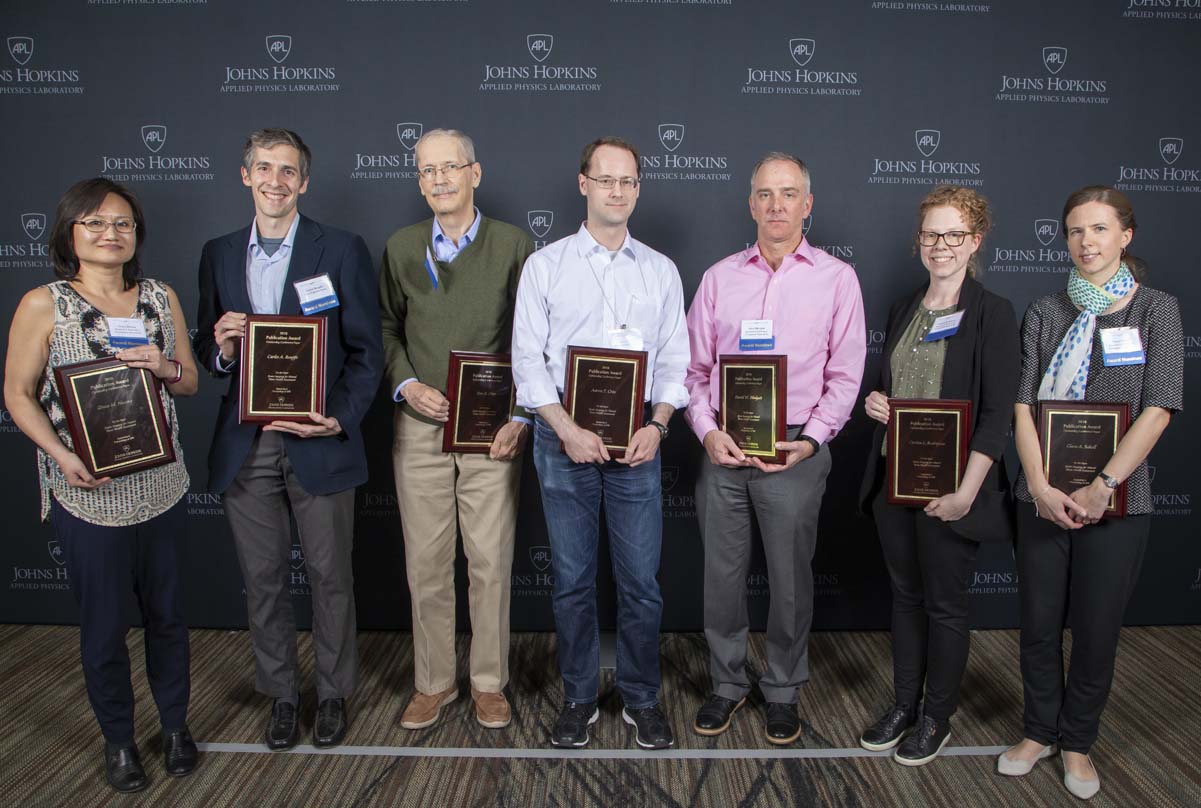
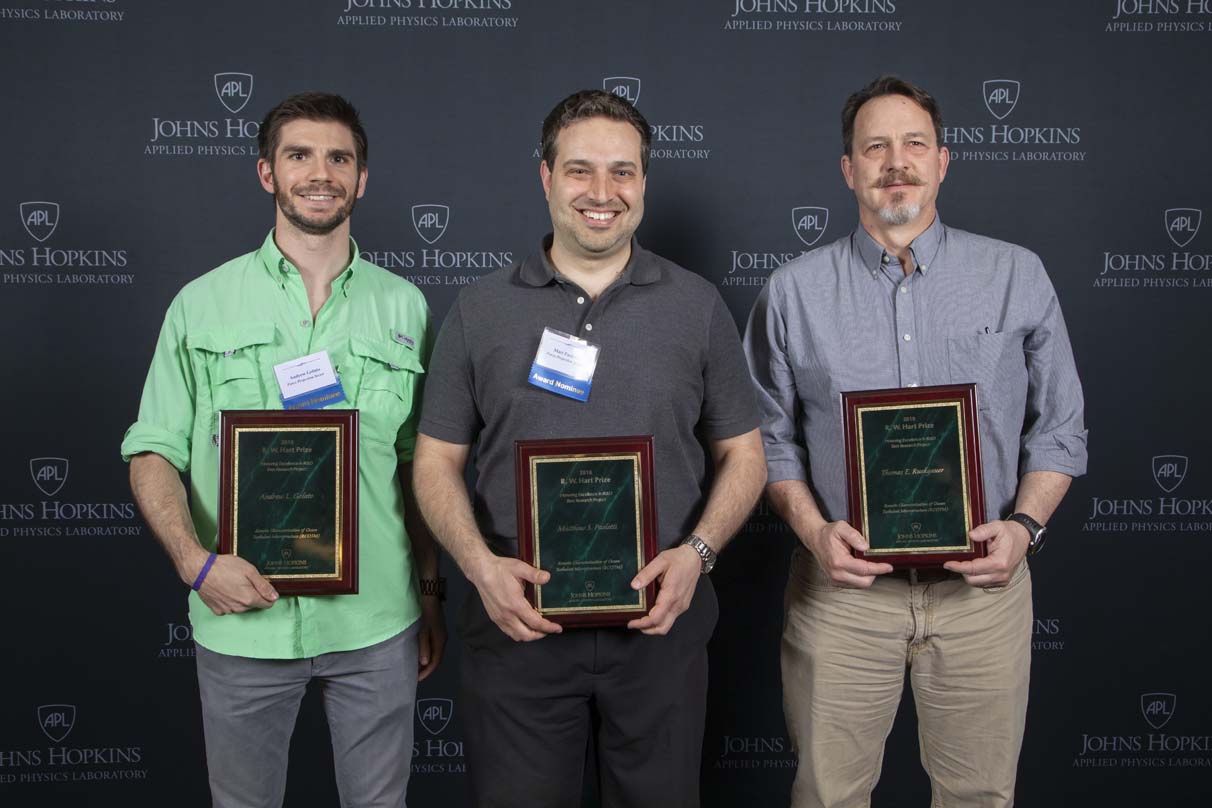
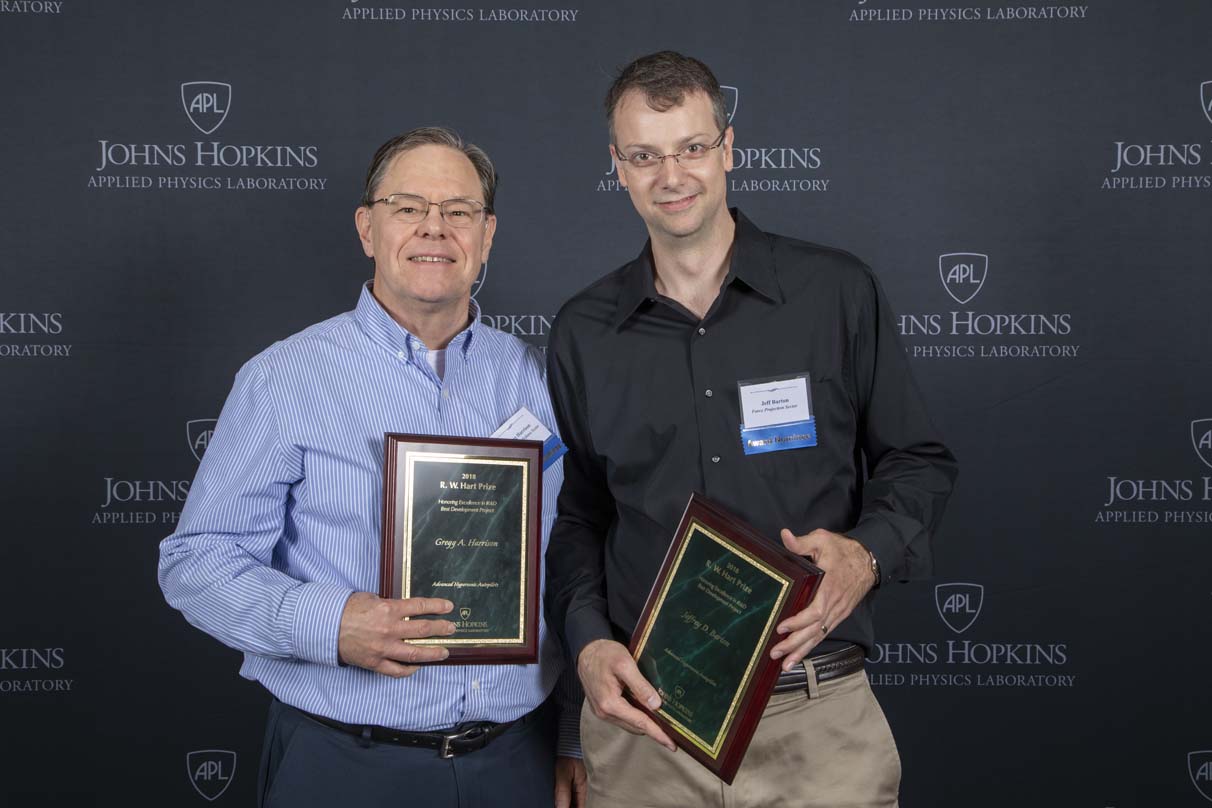
All images credit: APL
Invention of the Year: David W. Blodgett, Matthew S. Fifer, Scott M. Hendrickson, Alice F. Jackson, Erik C. Johnson, Tomasz M. Kott, Clare W. Lau, Griffin W. Milsap, Jeremiah J. Wathen and Michael E. Wolmetz, for creating a new optical system that noninvasively extracts anatomical and functional information from biological systems, including the brain. Originally developed for undersea operations, the optical system provides real-time access to magnitude and phase information about the brain, advancing understanding of structure and function; producing clinical insights into injury and disease diagnoses, prognoses and treatment; and facilitating brain-computer interface applications.
Government Purpose Innovation Award: Eric A. Forte, Christopher M. Gifford, Sean T. Happel, Stephen A. Hayes, Zachary D. Kurtz, Patricia K. Murphy, Clifford I. Olsen, Pedro A. Rodriguez Jr., Thomas T. Shaw and Adam S. Watkins for the onboard space-based automatic target recognition system that can respond in real time for time-critical missions.
Bumblebee Award: Douglas S. Adams, Peter D. Bedini, Kenneth E. Hibbard, David J. Lawrence, Ralph D. Lorenz, Shannon M. MacKenzie, David H. Napolillo, Kristin S. Sotzen, Elizabeth P. Turtle and Lawrence S. Wolfarth for the Dragonfly Titan Mission concept, creating a rotorcraft that would explore dozens of locations on Saturn’s moon to study the composition of Titan’s organic material in detail.
Noble Prize: Kyle L. Anderson, Bradley A. Barrett, Arthur S. Francomacaro, Justin D. Osborn, Jacob L. Sandler, Paul G. Velez and Nicole L. Whewell for attempting to reverse engineer a complex Microsoft Internet-of-Things device on a tight timetable as part of a Microsoft Capture the Flag challenge to find three secrets hidden on a Microsoft SOPRIS secure processor. They were not successful, but their work helped determine capability gaps for APL to address.
Ignition Grant Prize for Creativity and Potential Impact: David M. Brown, Xiomara Calderon-Colon, Victoria J. Campbell and Michael H. Jin for fabricating a transceiver made of a biological optical fiber and successfully demonstrating using plant stems 2–6 cm long at an optimum optimal wavelength.
Combustion Grant Prize for High-Risk, High-Impact Technical Ideas: Robert W. Chalmers, Grace M. Hwang, Clare W. Lau, Kevin M. Schultz and Bryanna Y. Yeh for phase-based control of autonomous robotic swarms to minimize computational cost and maximize scalability and performance through novel emergent behaviors.
Year 3 Propulsion Grant Awards (tie): Benjamin D. Baugher, Daniel S. Berman, Anna Loskiewicz-Buczak, Nathan H. Parrish and Jared T. Zook for developing methods to forecast the occurrence of disruptive events in time to prepare for or prevent them.
Edward J. Birrane III, David J. Copeland, Brian K. Haberman, Subodh S. Harmalker and Caleb W. Wang for demonstrating how to adapt proven commercial technologies to spacecraft to integrate multiple constellations, enabling highly robust and resilient space-based communications.
Mission Accomplishment for Current Challenge: Andrew S. Driesman, Kim A. Cooper, Patrick A. Hill and Kimberly M. Runkles for Parker Solar Probe — APL’s Mission to Touch the Sun. A scientific investigation sought for more than 60 years, Parker Solar Probe was finally successful because of APL’s engineering expertise, scientific leadership and robust program management. The mission was enabled by cutting-edge thermal engineering advances to protect the mission on its dangerous journey and a novel mission trajectory design.
Mission Accomplishment for Emerging Challenge: Hicham Alkandry, Matthew D. Collett, Nicholas W. Houriet and Jonathan T. Schwalbe for advanced target concept development, enabling the nation to address threats in the near-space domain.
Enterprise Accomplishment Award: Jigar R. Amroliwala, Angelina H. Boampong, James H. Clark, Thomas C. Gump, William S. Kallmeyer, Eric M. Kessler, Larry Loza, Patricia L. Miller, Nancy L. Parsons and Adam K. VanderHook for the classified enhancements project, providing the Laboratory with streamlined and improved service and response times for requests and incidents, and increasing the ability of Lab-wide IT to keep up with the demand in support of sponsor requirements.
The Alvin R. Eaton Award: Erik D. Justen, the chief engineer for advanced systems in the Air and Missile Defense Sector at APL, whose technical contributions and leadership for the Future Systems integration project have resulted in unparalleled revolutionary military capabilities for the defense of our nation.
Director’s Award for Special Achievements: Brad S. Bazow, Jennifer L. Cooper, Charles B. Cooperman, Jean M. Dougherty, Brian J. Grooman, Robert F. Henrick, Rachel S. Hodapp, Gabriel P. Kniffin, George S. Peacock and Carlos A. Renjifo for their project on advancing the future of acoustics — demonstrating the conceptualization of the physics, then developing and validating the end-to-end sensor design, processing algorithms and feasibility of implementation.
Publication Awards
Author’s First Paper in Journal or Proceedings (tie): Patrick B. Dandenault for “MENTAT: A New Wind Model for Earth’s Thermosphere,” published in the Journal of Geophysical Research: Space Physics.
Peter M. Thielen for “Exploration of the Molecular Basis of Blast Injury in a Biofidelic Model of Traumatic Brain Injury,” published in the journal Shock Waves.
Outstanding Paper in the Johns Hopkins APL Technical Digest (The Walter G. Berl Award): Douglas S. Adams, Peter D. Bedini, Kenneth E. Hibbard, David J. Lawrence, Ralph D. Lorenz, Shannon M. MacKenzie, Patrick N. Peplowski, Colin Z. Sheldon, Kristin S. Sotzen, Elizabeth P. Turtle and Lawrence S. Wolfarth for “Dragonfly: A Rotorcraft Lander Concept for Scientific Exploration at Titan.”
Outstanding Research Paper in an Externally Refereed Journal Publication: Scott E. Wunsch for “Harmonic Generation by Nonlinear Self-interaction of a Single Internal Wave Mode,” published in the Journal of Fluid Mechanics.
Outstanding Development Paper in an Externally Refereed Publication: Bliss G. Carkhuff, Plamen A. Demirev and Rengaswamy Srinivasan for “Impedance-Based Battery Management System for Safety Monitoring of Lithium-Ion Batteries,” published in the IEEE Transactions on Industrial Electronics.
Outstanding Special Publication: Grace M. Hwang and Shane W. Lani for “Ultrasonic Modulation of Neural Circuit Activity,” published in Current Opinion in Neurobiology.
Outstanding Conference Paper: Eyal Bar-Kochba, David W. Blodgett, Aaron T. Criss, Tom B. Criss, Jason R. Harper, Grace M. Hwang, Clare W. Lau, Carlos A. Renjifo, Carissa L. Rodriguez and Clara A. Scholl for “Brain Imaging for Neural Tissue Health Assessment,” in the Proceedings of the Society of Photo-Optical Instrumentation Engineers (SPIE).
R. W. Hart Prizes for Excellence in Independent Research and Development
Best IRAD Research Project: Remote Characterization of Ocean Turbulent Microstructure, with principal participants Kevin H. Foster, Andrew L. Golato, Matthew S. Paoletti and Thomas E. Ruekgauer.
Best IRAD Development Project: Advanced Hypersonic Autopilots, with Jeffrey D. Barton, Brandon T. Coloe, Gregg A. Harrison, Kenneth F. MacFarlane and David A. Snyder.
